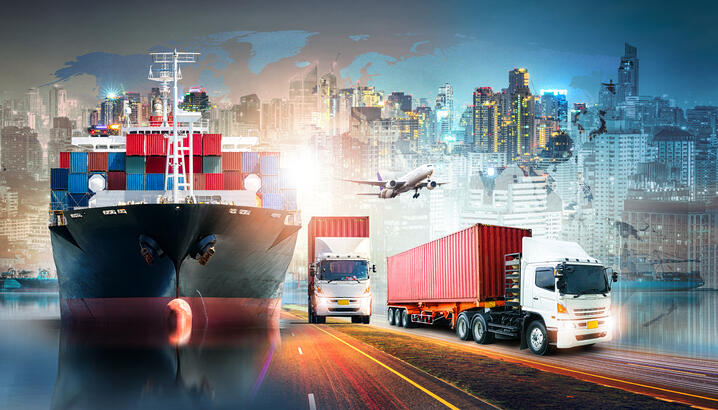History is littered with innovations born from tragedies and the recent pandemic is no exception. From the construction industry to the local government sector, organisations have harnessed digital technologies including the Internet of Things (IoT) to adapt the way they operate. This has also been true in the transport and logistics industries.
Few people in transport and logistics won’t have recognised the benefits of intelligent automation. Here too, IoT is set to underpin significant advances. The transport and logistics industries are littered with opportunities to use IoT to improve productivity and solve problems. Here are ten examples.
Top 10 IoT benefits to the transport and logistics industries
1. Theft & hazard reduction through video surveillance
Surveillance cameras provide access to real-time security footage and enable organisations to grant staff access to locations, remotely. The same technology can be used to monitor restricted and potentially hazardous areas for unauthorised personnel and safety concerns respectively.
2. Eliminating eyeballing errors
AI-enabled video analytics can be used to identify damage to containers, pallets and packages that human eyes can easily miss.
3. Automating customer service using AI
AI chatbots can assist with customer quotes and general customer service by eliminating repeat requests and mundane tasks from human workflows. With such functions automated, customers with important queries should in theory have fewer barriers between them and their answers.
4. End-to-end delivery tracking visibility and optimisation
Sensors can monitor products from the warehouse to a customer’s front door, including by tracking delivery vehicles and package status (using RFID) in real time. The resulting data can be used to optimise delivery schedules, the time required to complete a process, and determine whether additional drivers are needed at certain times (due to traffic or package-volume issues).
5. Preventing equipment malfunction
IoT devices’ ability to constantly monitor assets makes it possible to send early warnings when a machine stops working optimally. This provides an opportunity to perform minor maintenance instead of waiting for catastrophic failure and the subsequent, costly downtime.
6. Inventory and supply chain monitoring
Warehouse sensors can automatically detect when inventory is running low and automatically order stock accordingly. The data can also provide insights about how long it takes different products to sell and which products would benefit from being moved to easier-to-access locations.
7. Warehouse monitoring
Warehouse sensors can also monitor temperature, humidity and other environmental conditions that might affect prolonged storage and safety. They can also measure employee efficiency in real-time.
8. Improved cybersecurity
Inherent, real-time threat monitoring can help prevent damaging intrusions by bad actors, in addition to protecting, personal and sensitive data.
9. Managing vehicular traffic flow
Using smart cameras in smart cities enables efficiencies in population movement. The sensors can be deployed in areas of frequent vehicular accidents; monitor broken-down vehicles; optimise parking-spot turnover; identify illegally parked vehicles and automatically notify rangers; ascertain vehicular occupancy and the type of vehicles that frequent an area.
10. Population flow management
The data from smart cameras can also help identify the volumes and types of people in busy areas and help make provisions for them. This may include provisioning more eating areas and bins at lunch time, or adding-and-adjusting road-crossing features.
https://www.iothub.com.au/news/how-iot-is-helping-transport-and-logistics-industries-580149


